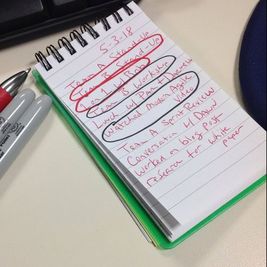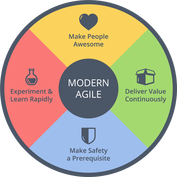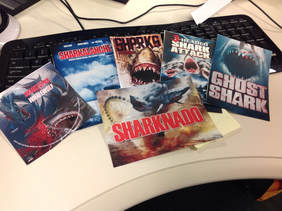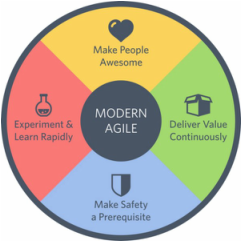
One of the principles of Modern Agile is, "Deliver Value Continuously." The question that typically comes next is: "How do I know if I am doing that?" For quantifiable tasks, it's fairly easy. If you are a chicken, it's easy enough to measure the number of eggs produced, and the quality and size of those eggs. If you're not a chicken, it's a bit harder.
One of the things that I do is keep a Value Journal. It's very simple. Grab any kind of notebook. Each day, write a list of things you did: meetings, significant conversations, classes, videos, working on a blog post.
At the end of the day, circle the two most valuable things you did, and the two least valuable things. They don't have to be super-valuable or real wastes of time...it's just relative to the other things you did today.
Ask yourself these questions:
What made the most valuable items valuable?
How can I apply that to other situations?
Why were the least valuable items not valuable?
Could I have helped to make them valuable?
Would it be more valuable to (cancel the meeting, do more research, have the right people in the room, etc.)?
Then look at your schedule for tomorrow and see if you can apply anything you just learned.
A Value Journal is a quick way to make small improvements that have a large impact. Don't spend a lot of time on it, and don't overthink.
One of the things that I do is keep a Value Journal. It's very simple. Grab any kind of notebook. Each day, write a list of things you did: meetings, significant conversations, classes, videos, working on a blog post.
At the end of the day, circle the two most valuable things you did, and the two least valuable things. They don't have to be super-valuable or real wastes of time...it's just relative to the other things you did today.
Ask yourself these questions:
What made the most valuable items valuable?
How can I apply that to other situations?
Why were the least valuable items not valuable?
Could I have helped to make them valuable?
Would it be more valuable to (cancel the meeting, do more research, have the right people in the room, etc.)?
Then look at your schedule for tomorrow and see if you can apply anything you just learned.
A Value Journal is a quick way to make small improvements that have a large impact. Don't spend a lot of time on it, and don't overthink.






 RSS Feed
RSS Feed